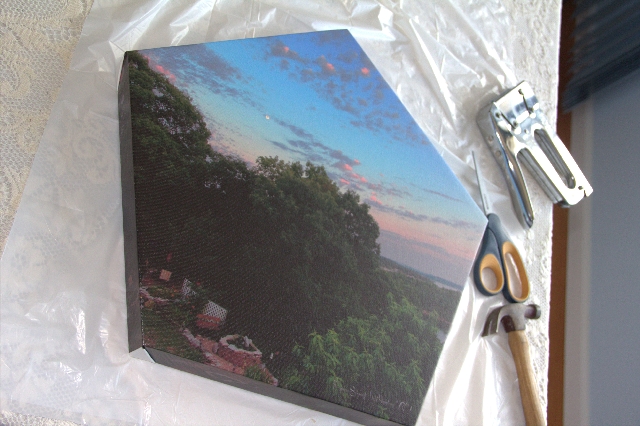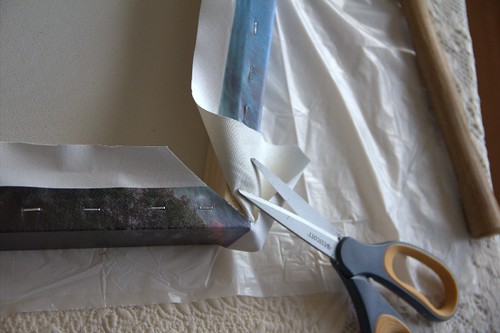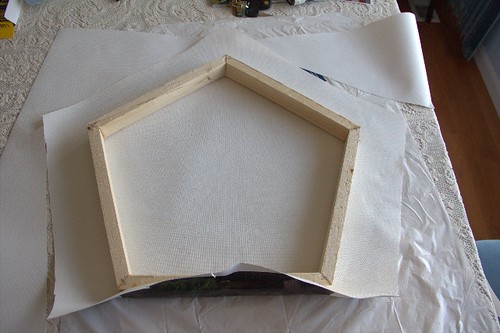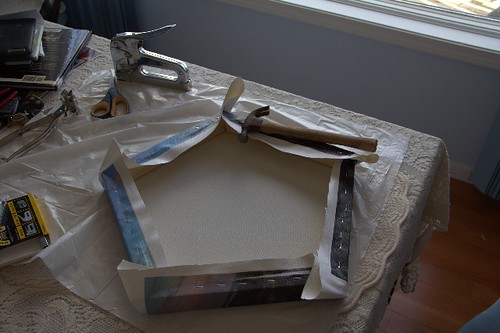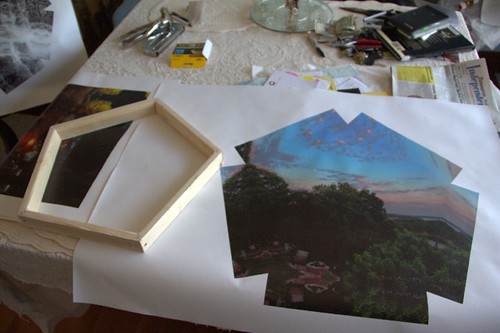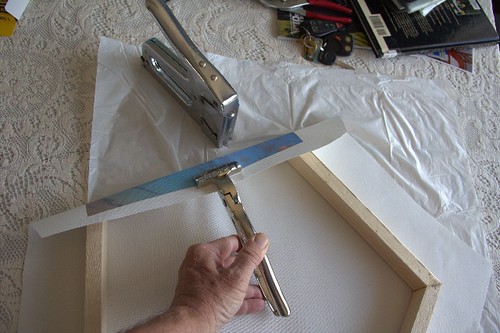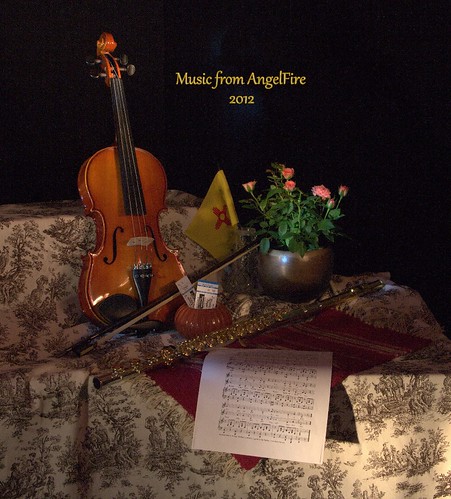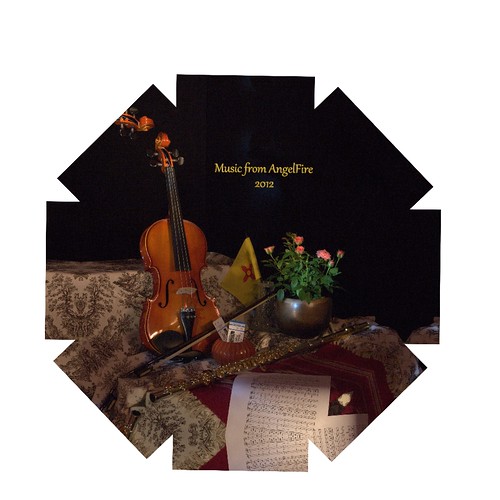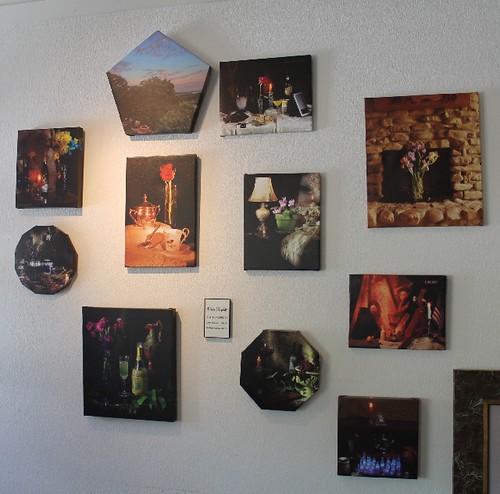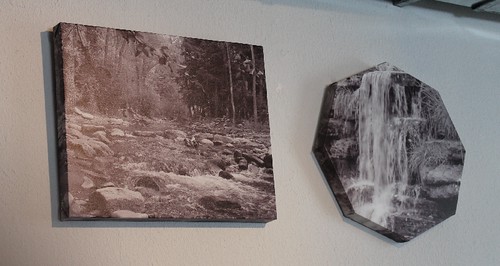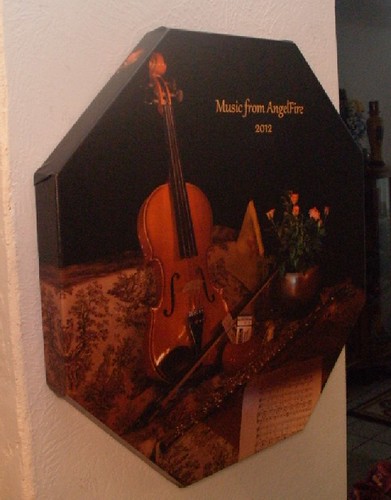Frank Schmidt
New member
This forum may be the place for posting the following thread. It pertains to several issues and methods that I am calling “Photo_21” and which will be demonstrated and described below.
I’ve posted a few ideas over on the introduction forum but I now have pictures on Flickr which better show the methods.
This Photo_21 style is a combination of unusual geometric shaped pictures printed on canvas and also non-traditional lighting methods when making the picture. The indoors pictures are made in a dark studio with various light sources and the Chess image below is one of those. Please bear in mind that taking a picture of a picture which is hanging on the wall results in a poor digital image. The best image is the digital one but that is not the finished product; the canvas picture hanging on the wall is and it can only be critiqued by looking at it in its real place in real time. Key Point: Picture printed on canvas is viewed using reflected light ; digital image on computer is viewed via emitted light from a monitor. These can’t be compared as anything nearly the same.
The Chess picture is not “geometrically cropped” but is used to show lighting methods. F/14, ISO 160 for 53 seconds at 41mm focal length. I now usually use f18 or 20 for indoor work to get more specular reflections from applied light. The scene here is set on a glass table covered with black felt which has a hole cut in it. Under the table top is set a UV blacklight (24 inch long from Walmart at about $20).
This exposure is done with the camera on a tripod in a dark studio and the blacklight was lit first for a good 20 seconds then turned off and the rest of the scene was lit with an LED flashlight being careful not to apply any of it on the chess set as that would erase the effect of the blacklight and make the glass pieces look as they do under fluorescent lights. The candle was lit in the last second of exposure by stepping in front of the camera between it and the scene and applying a lighter to the wick. The camera can’t see and record a person in front of it if there is no light shining in the room.
No flash used. No Photoshopping other than cropping and slight straightening. That’s about all I have to say about the picture and camerawork on it; this was just a means to an end. The end being artwork on canvas on the gallery wall that might sell.
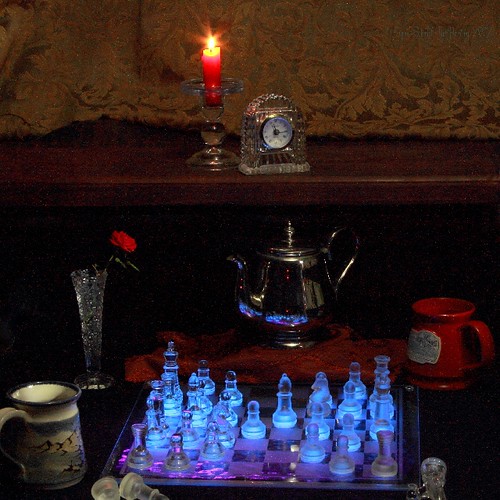
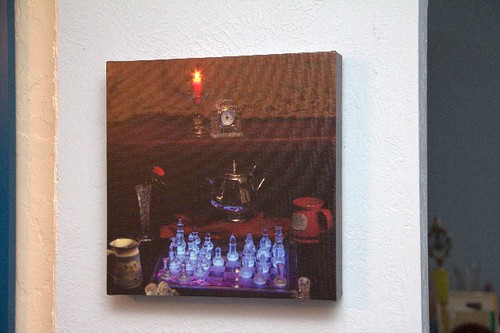
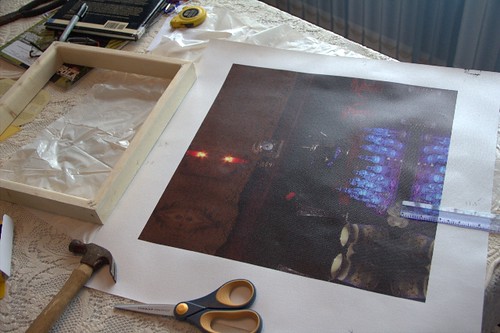
The pictures of the pentagon evening scene show another longer exposure that was edited pretty heavily to get the cloud color and these pictures show how the image looks cropped (using a GIMP add-on) and then printed on canvas and stretched to a custom-built pentagon wood frame.
Again, it will be in a gallery for sale. Any geometric shape could have been chosen. Note the white triangular tab on the corner. This fault was covered over by painting the canvas corner with acrylic artist’s paint to blend in with the scene colors. A more advanced solution to cover the fault is to select and copy the image pattern at its edges and paste that onto the white corners before printing.
There are links posted here that help explain more of what I’m doing and how it is done: http://www.openphotographyforums.com/forums/showthread.php?t=16127
This includes the mention of geometric framing as a way for wall art to compliment architectural elements of a room in which it is displayed.
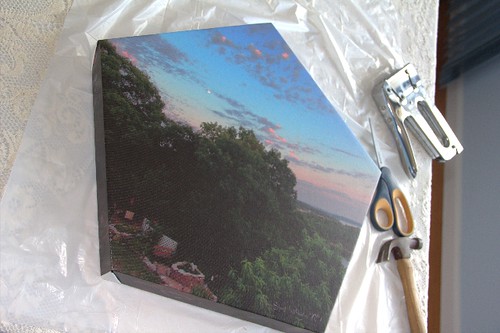
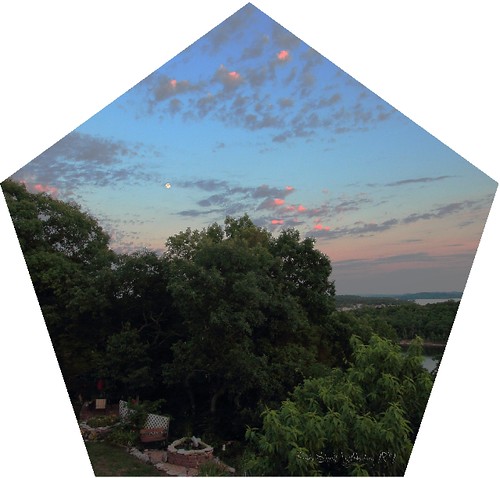
I’ve posted a few ideas over on the introduction forum but I now have pictures on Flickr which better show the methods.
This Photo_21 style is a combination of unusual geometric shaped pictures printed on canvas and also non-traditional lighting methods when making the picture. The indoors pictures are made in a dark studio with various light sources and the Chess image below is one of those. Please bear in mind that taking a picture of a picture which is hanging on the wall results in a poor digital image. The best image is the digital one but that is not the finished product; the canvas picture hanging on the wall is and it can only be critiqued by looking at it in its real place in real time. Key Point: Picture printed on canvas is viewed using reflected light ; digital image on computer is viewed via emitted light from a monitor. These can’t be compared as anything nearly the same.
The Chess picture is not “geometrically cropped” but is used to show lighting methods. F/14, ISO 160 for 53 seconds at 41mm focal length. I now usually use f18 or 20 for indoor work to get more specular reflections from applied light. The scene here is set on a glass table covered with black felt which has a hole cut in it. Under the table top is set a UV blacklight (24 inch long from Walmart at about $20).
This exposure is done with the camera on a tripod in a dark studio and the blacklight was lit first for a good 20 seconds then turned off and the rest of the scene was lit with an LED flashlight being careful not to apply any of it on the chess set as that would erase the effect of the blacklight and make the glass pieces look as they do under fluorescent lights. The candle was lit in the last second of exposure by stepping in front of the camera between it and the scene and applying a lighter to the wick. The camera can’t see and record a person in front of it if there is no light shining in the room.
No flash used. No Photoshopping other than cropping and slight straightening. That’s about all I have to say about the picture and camerawork on it; this was just a means to an end. The end being artwork on canvas on the gallery wall that might sell.



Again, it will be in a gallery for sale. Any geometric shape could have been chosen. Note the white triangular tab on the corner. This fault was covered over by painting the canvas corner with acrylic artist’s paint to blend in with the scene colors. A more advanced solution to cover the fault is to select and copy the image pattern at its edges and paste that onto the white corners before printing.
There are links posted here that help explain more of what I’m doing and how it is done: http://www.openphotographyforums.com/forums/showthread.php?t=16127
This includes the mention of geometric framing as a way for wall art to compliment architectural elements of a room in which it is displayed.


Last edited by a moderator:

